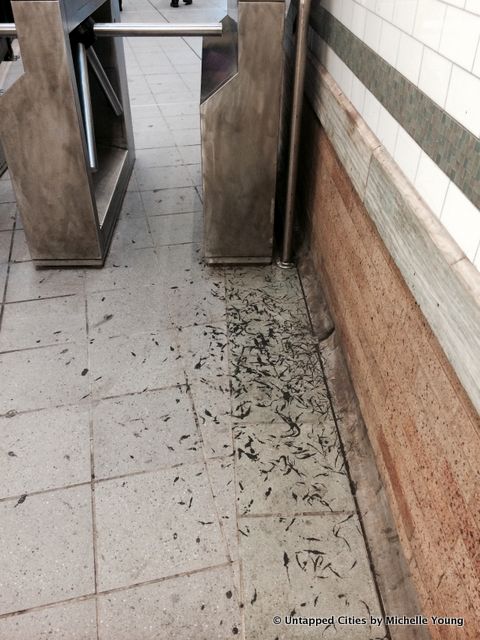Tour Louis Armstrong's House+ More Exclusive Member-Only January Events
Go inside the home of a jazz legend, learn how to make a subway map, spend an evening in a private art collection, and more!


Every time we go through Columbus Circle subway station, we wonder about those big patches of black tar-like substance that just keep growing on the subway platforms. Last year, when there wasn’t quite as much, and we thought in passing it might be just a really popular place to throw gum. But this time, the more we poked around the more we saw that the stuff was just all over the place. And, some of it was fresh! Looking up, we could see it dripping from the beams.
Digging into it, lo and behold, Slate dug into this bizarre issue back in May. Turns out it is indeed tar or rather, mastic, as
Branko Kleva, assistant chief of the Division of Stations explains. The MTA uses mastic to seal up and waterproof subway infrastructure but when it gets hot, the stuff starts dripping down. Incidentally, tar was also used to black out the beautiful skylights of the now-decommissioned City Hall Subway Station during WWII.
The mastic dripping down at Columbus Circle
Mastic itself has a fun history. It’s a resin that comes from the mastic tree, and its production in Chios, Greece is granted protected designation of origin. As for whether we’ll continue to see mastic in the NYC subways? Kleva tells Slate “
that new subway tunnels use new, different kinds of sealants that are less likely to form” the gunk. For now, think of it as a fun tidbit you can tell people about when you wait on the platform or head out the turnstile.

Read more from our Cities 101 series about how stuff works in the city. Find out just how long the author has been pondering the black stuff @untappedmich.
Subscribe to our newsletter